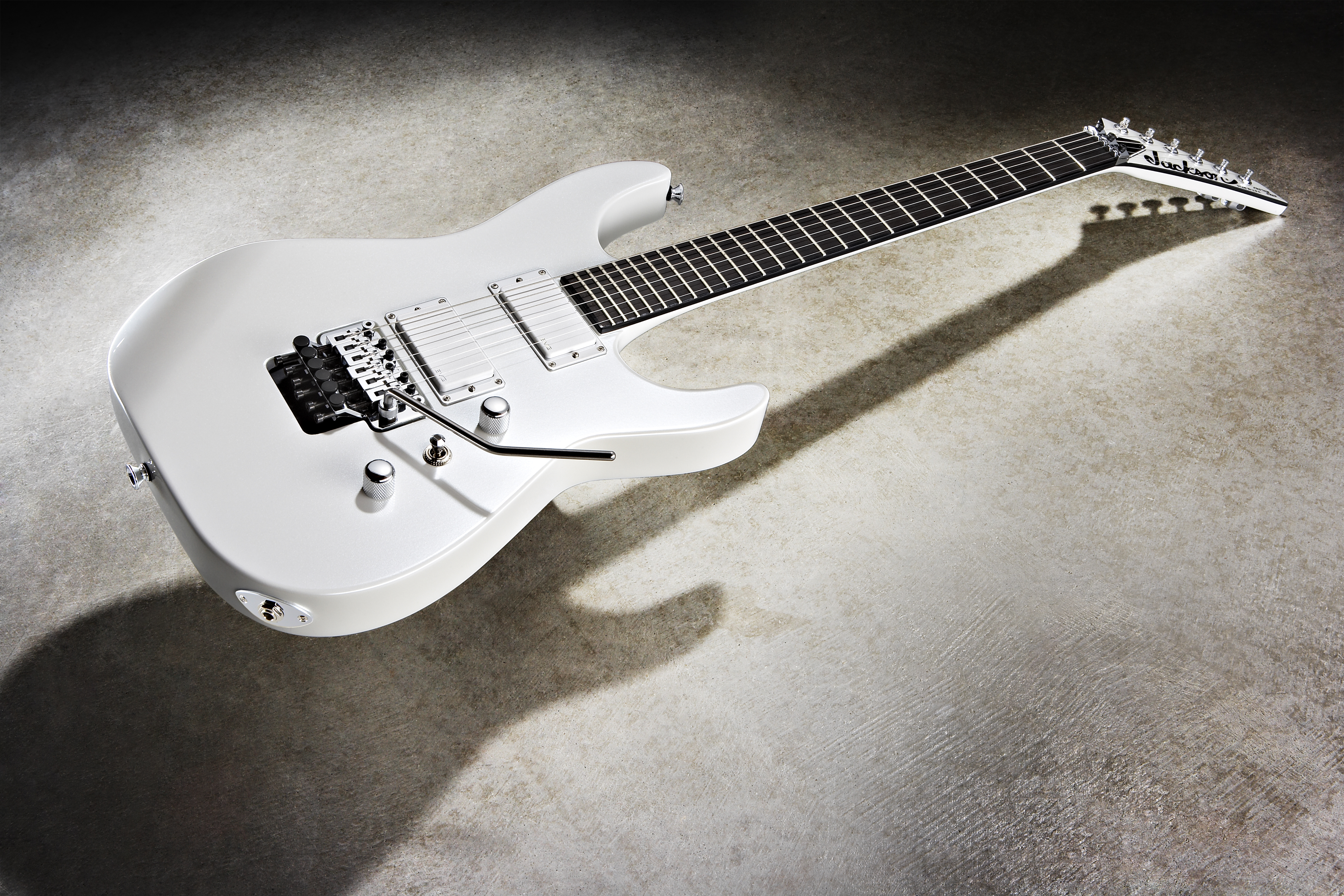Jackson Guitars' Limited-Run 30th Anniversary Soloist Celebrates the Model's "Super Strat" Legacy —Video

This is an excerpt from the August 2014 issue of Guitar World. For the rest of this story, plus features on the Who's Quradophenia, Soundgarden, Jackson Guitars, David Crosby, our Summer Tour Survival Guide, columns, tabs and reviews of new gear from Jackson, Ibanez, Blackstar, Musicvox, EarthQuaker Devices, Electra Guitars and more, check out the August 2014 issue at the Guitar World Online Store.
With its introduction 30 years ago, the Jackson Soloist pioneered the “Super Strat” design that defined metal guitars. The new limited-run 30th Anniversary Soloist celebrates the guitar’s legacy and long-sustaining life.
Introduced 30 years ago, the Jackson Soloist is one of the archetypal modern metal guitars—a sharp-edged, high-performance machine loaded with all the heavy-duty, precision-calibrated hardware needed to execute today’s extreme-metal moves.
Much of the style, and many of the features, we associate with contemporary metal guitar craft originated with the Soloist. For master guitar builder Mike Shannon, working on the Soloist with company founder Grover Jackson back in the early Eighties was a career-defining moment.
“I still have the original template that was used for control placement,” Shannon says, “and the original fixture that we used on the pin router to cut the neck and head shape.”
At one point in the company’s history, Shannon was told to discard these items. He didn’t comply.
“There’s no way I’m throwing away vintage stuff,” he says. “I knew there was going to be a use for it some day.”
Get The Pick Newsletter
All the latest guitar news, interviews, lessons, reviews, deals and more, direct to your inbox!
That day came for Shannon when he was asked by Fender Musical Instruments Corporation, which currently owns the Jackson brand, to put together a limited-run 30th Anniversary Soloist model. In the three decades that have elapsed since its 1984 inception, the Soloist has proven to be one of Jackson’s most enduring and highly imitated designs.
It’s an instrument that has found favor with a metal-centric roster of influential guitarists, including Phil Collen, Scott Ian, Jeff Beck, Brad Gillis, Chris Broderick, David Ellefson and Chris Beattie, among many others. And while the design arose from the “pointy-guitar” aesthetic of the hair-band Eighties, it has clearly outlived the age of spandex and hairspray.
The Soloist is one of the archetypal designs that came out of luthier Grover Jackson’s early period, when he assumed control of Charvel Guitars in Glendora, California, and launched the Jackson brand in 1980.
The company’s first guitar was the Concorde, a metalized Flying V remake created in collaboration with Randy Rhoads. With that triumph under their belts, Jackson and his crew turned their attention to the “Super Strat” concept—an update of the classic Fender Stratocaster, designed for the high-performance demands of the virtuoso shred-guitar style being pioneered at the time by players like Rhoads, Eddie Van Halen, Yngwie Malmsteen, Steve Vai and others.
Jackson’s first Super Strat, and a major precursor to the Soloist, was the Dinky, so named because the body was 7/8ths the size of a Stratocaster body, with Leo Fender’s original rounded contours reconfigured as sharp points on the upper-body bouts.
“It sharpens the look, rather than it being rounded over,” says Shannon, who worked on the Dinky as well.
“Also, the idea was to make the body more comfortable for some players and probably take some of the weight off, although your choice of woods would also influence the weight quite a bit. And with the way the style of music was headed, it was a perfect change to get away from your everyday Strat that had been around for 40 years at the time.”
But whereas the Dinky was a bolt-on neck design, Jackson, Shannon and co-designer Tim Wilson wanted to create a Super Strat with the same kind of neck-through-body design that had been used on the Concorde.
Of course, the neck-through concept had been around at least since Paul Tutmark’s pioneering 1937 Audiovox 736 (the first electric bass), Les Paul’s circa 1941 “Log” guitar and the Gibson Firebird, which was introduced in 1963. It found even more widespread favor in the sustain-crazy Seventies through the work of companies like Alembic. But tons of sustain is also a major desideratum of many shred playing techniques as well, so Jackson decided to take the neck-through concept onboard.
“It seemed the right direction to go in,” Shannon says. “We figured, Well, everybody does a bolt-on; let’s see some new stuff. When we first started making neck-through guitars, we made them with three-piece maple center blocks, which required a lot of wood. But when we started making more than one Soloist at a time, we figured we’d go to one solid piece of maple. And ultimately, a year or two later, we updated to using quarter-sawn maple with a scarf joint and glued head.”
For the rest of this story, plus features on the Who's Quradophenia, Soundgarden, Jackson Guitars, David Crosby, our Summer Tour Survival Guide, columns, tabs and reviews of new gear from Ibanez, Blackstar, Musicvox, EarthQuaker Devices, Electra Guitars and more, check out the August 2014 issue at the Guitar World Online Store.

In a career that spans five decades, Alan di Perna has written for pretty much every magazine in the world with the word “guitar” in its title, as well as other prestigious outlets such as Rolling Stone, Billboard, Creem, Player, Classic Rock, Musician, Future Music, Keyboard, grammy.com and reverb.com. He is author of Guitar Masters: Intimate Portraits, Green Day: The Ultimate Unauthorized History and co-author of Play It Loud: An Epic History of the Sound Style and Revolution of the Electric Guitar. The latter became the inspiration for the Metropolitan Museum of Art/Rock and Roll Hall of Fame exhibition “Play It Loud: Instruments of Rock and Roll.” As a professional guitarist/keyboardist/multi-instrumentalist, Alan has worked with recording artists Brianna Lea Pruett, Fawn Wood, Brenda McMorrow, Sat Kartar and Shox Lumania.
“What blew me away was that everyone wanted the curly maple top. People were calling, saying, ‘I’ve got to have the bird inlays’”: Paul Reed Smith on raising the Standard 24, finally cracking the noise-free guitar and why John Sykes is a tone hero
“It combines unique aesthetics with modern playability and impressive tone, creating a Firebird unlike any I’ve had the pleasure of playing before”: Gibson Firebird Platypus review











